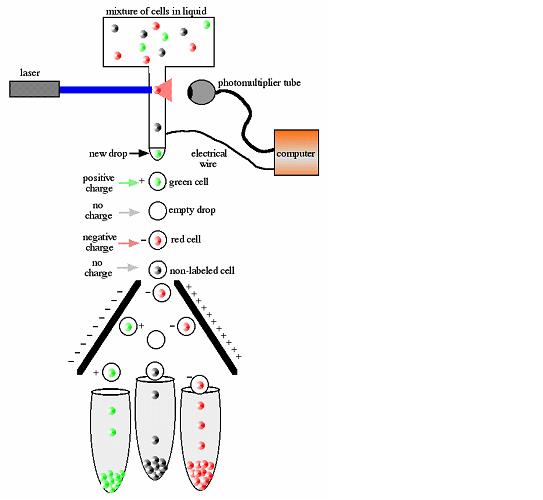Flow cytometry
From 2007.igem.org
Revision as of 14:25, 9 July 2007
Flow cytometry:
FACS is a specialized type of flow cytometry that provides a method for sorting a heterogeneous mixture of cells into different containers, one cell at a time, based upon light scattering and fluorescent characteristics of each cell. In this case, high-performing cells that are capable of high rates of iron reduction will result in a higher level of ferrozine dye fluorescence in the alginate bead. These beads containing high-performing strains will be sorted by the flow cytometer into a separate container.
The alginate beads are suspended in a rapidly flowing stream of liquid where there is a large separation between cells. The stream of beads is broken into individual droplets by a vibrating mechanism where there is a low probability of more than one bead being in a droplet. Immediately before the stream is broken into droplets, the flow cytometer measures the fluorescence of each bead. As the stream is broken into individual droplets, an electrically charging ring charges the droplets based on previously measured fluorescence intensity. The charged droplets are diverted into containers based on their charge by falling through an electrostatic deflection system.
